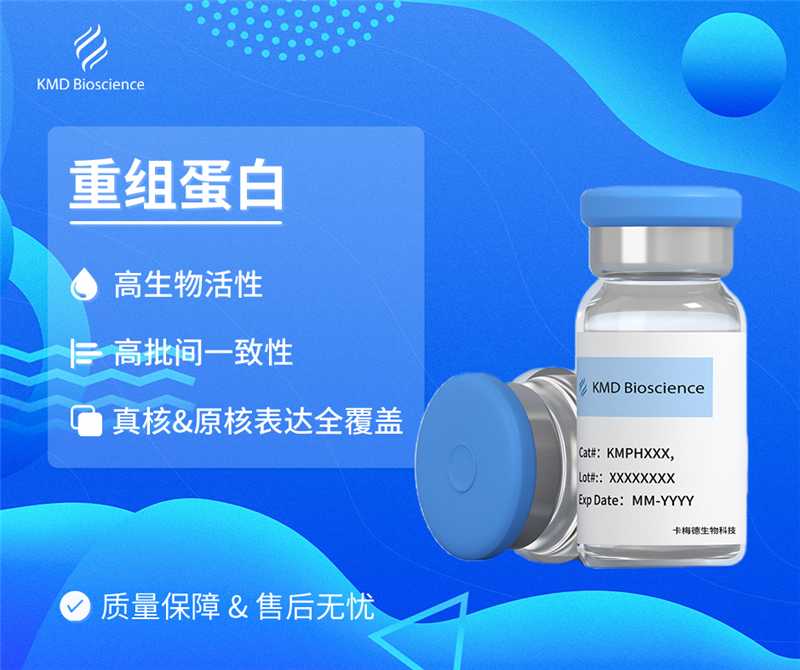| Catalog Number | KRP147 |
| Alias | 钙黏蛋白-1, Cadherin-1 , ARC-1, Epithelial cadherin, E-cadherin, Uvomorulin, CD antigen CD324, [Cleaved into: E-Cad/CTF1; E-Cad/CTF2; E-Cad/CTF3], |
| Size | 20ug, 50ug, 100ug, 200ug, 1mg |
| Product Description | Mouse Cdh1(157-709 aa) |
| Molecular Name | Cdh1 |
| Product Introduction | 钙黏蛋白-1细胞粘附分子,参与细胞间粘附。。 |
| Molecular Weight | 75-87 kDa |
| Expression System | HEK293F Cells |
| Species | Mouse |
| Concentration | 联系销售经理获得最新批次的浓度 |
| Purity | ≥95% |
| Purification | Affinity Purification |
| Uniprot ID | P09803 |
| Storage Condition | Store the product under sterile conditions after opening at -80℃ for 12 months. Store the lyophilized powder at -20℃. Avoid repeated freeze-thaw cycles. |
| Formulation | Supplied in PBS |
| Shipping Condition | This product is shipped on ice packs or dry ice. |
| Background | Cadherins are calcium-dependent cell adhesion proteins (PubMed:11976333). They preferentially interact with themselves in a homophilic manner in connecting cells; cadherins may thus contribute to the sorting of heterogeneous cell types. CDH1 is involved in mechanisms regulating cell-cell adhesions, mobility and proliferation of epithelial cells (PubMed:11976333). Promotes organization of radial actin fiber structure and cellular response to contractile forces, via its interaction with AMOTL2 which facilitates anchoring of radial actin fibers to CDH1 junction complexes at the cell membrane (By similarity). Plays a role in the early stages of desmosome cell-cell junction formation via facilitating the recruitment of DSG2 and DSP to desmosome plaques (By similarity). Has a potent invasive suppressor role. It is a ligand for integrin alpha-E/beta-7 (By similarity). {ECO:0000250|UniProtKB:F1PAA9, ECO:0000250|UniProtKB:P12830, ECO:0000269|PubMed:11976333}.; E-Cad/CTF2 promotes non-amyloidogenic degradation of Abeta precursors. Has a strong inhibitory effect on APP C99 and C83 production (By similarity). {ECO:0000250|UniProtKB:P12830}.; (Microbial infection) Does not function as a receptor for L.monocytogenes internalin A (InlA); mutating a single surface-exposed residue confers receptor activity to this protein and promotes uptake of the bacteria. {ECO:0000269|PubMed:10406800}. |
| Endotoxin | < 0.1 EU per ug |
| Biological Activity | Measured by the ability of the immobilized protein to support the adhesion of the MCF‑7 human breast cancer cells. The ED50 forthis effect is 0.25-1 μg/mL. |
| Product Declaration | 该产品仅供科研使用,不可直接用于人体或注射。 |











 0
0
